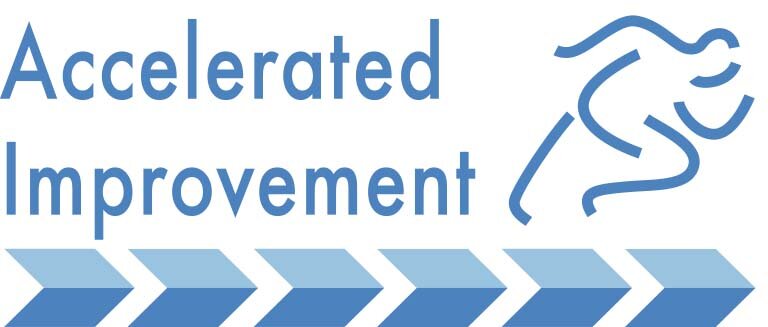Frequently asked questions.
Q: What does “Accelerated Improvement” mean?
The business was established in 1996 to help organisations and individuals, increase the speed of improvement and also its sustainability.
All the parts of the business share a commitment to making learning compelling and thus memorable; after all, if you are bored by something your brain will work very hard not to remember it!
Another accelerator is a relentless dislike of, and commitment to removing, all unnecessary complexity. For example a key indicator for us in designing leadership development is how often that particular piece of input is of practical benefit; this in turn leads to a focus on ensuring excellent delivery of “the basics” that has been compared to top class professional sport.
Q: How does your approach to engagement differ from the mainstream top-down approaches based on surveys and focus groups?
We distinguish between "management engaging employees" usually via top-down "initiatives" often driven by engagement survey responses
and
our approach, which stresses that employees are already engaged (in supporting families, loved ones, in their hobbies and passions etc.) .... just not always on the things their leaders want them to be engaged in!
The discretionary effort is already there but it is often latent i.e. not realized in the absence of a system of work and culture that deserves such effort from staff.
The table below summarises the key differentiators:
Q: What is different about your approach?
Customers call the approach “unique” (see GKN quote) and part of it is the explicit work on finding true engagement at values and beliefs (not just behavioural) level.
To give an example: the Credit Crunch has led to widespread media coverage of “fat cats” and other unflattering descriptions of the character of the senior leadership of large organisations; even Hollywood, in the capital of capitalism, produces a stream of movies that portray big business in a light that is repellent to most employees’ values; against competition from trusted sources such as the BBC and Hollywood “normal”/ traditional corporate communication has little chance; we have ways of combating that by achieving genuine engagement with employees’ existing values and this is many times more effective that anything that can be achieved by top down approaches. (see Case Studies)
Q: On a site visit to one of your clients, I saw the effects of “Behavioural Standards”, where did the concept come from?
The inspiration was from years of frustration trying to meaningfully hold senior leaders accountable using values!
Values-based approaches to leadership alignment and accountability suffer from opposite weaknesses to the “rules-based” approaches they replaced.
We systematically work at values and beliefs level but in this case, the degree of interpretation allowed made it difficult to achieve genuine accountability. In addition the disproportionate penalty paid, when even one leader exhibits behaviour inconsistent with the values, necessitated some innovation.
Behavioural Standards are the result of that innovation and aim to be measurable and yet capable of being adapted to different cultures and styles (many “Global” values are Western or even Anglo-Saxon specific in their assumptions).
This issue is addressed in most of the Case Studies.
Q: I find it unsettling that you are critical of Political Correctness since PC aims to prevent discrimination and encourage diversity.
We fully support the aims of PC; it is the disastrously, counter-productive effects of PC that we are against!
We use an approach that achieves the aims of PC without the counter-productive unintended consequences. Behavioural Standards focus on looking for the best in people and we have found this and other techniques for addressing these issues in a light rather than hectoring tone, to be many times more effective.
How likely are you to persuade someone if you attribute a negative motive to his or her actions?
How really diverse are you if you insist there is only one way to be diverse?
How effective will you be if you look for the worst possible interpretation of someone’s behaviour?
Q: Why are you against PowerPoint?
We see it as a technique and one that is usually inconsistent with the true engagement of people at the values and beliefs level. It is appropriate in some, limited circumstances.
Our focus is on actually engaging people:
What is the point in being technically “right” if no-one is listening?
What is the value of focussing on sending communication messages if there is no-one receiving them without severe filtering?
Focusing on ensuring the receipt of messages is crucial and PowerPoint is just not designed to do that.
Q: I was told about your “systems approach”; what does this mean?
We have to ensure that the system people work within rewards the behaviours necessary to produce never-ending excellence and continuous improvement.
This is why we have a practice that integrates excellence in Lean and leadership development.

